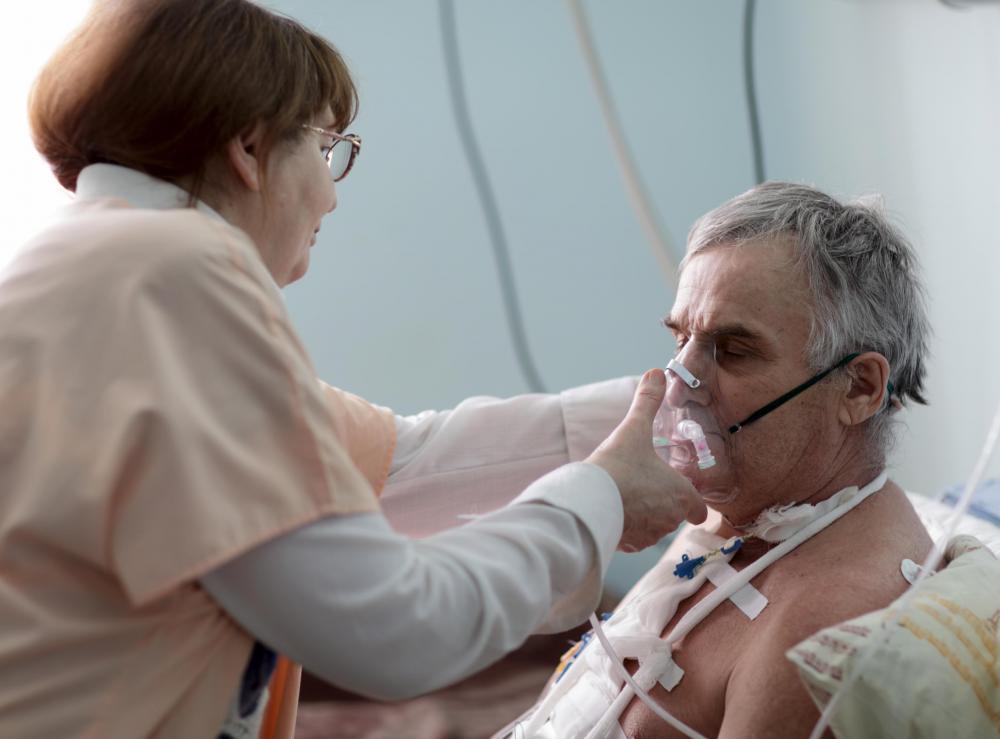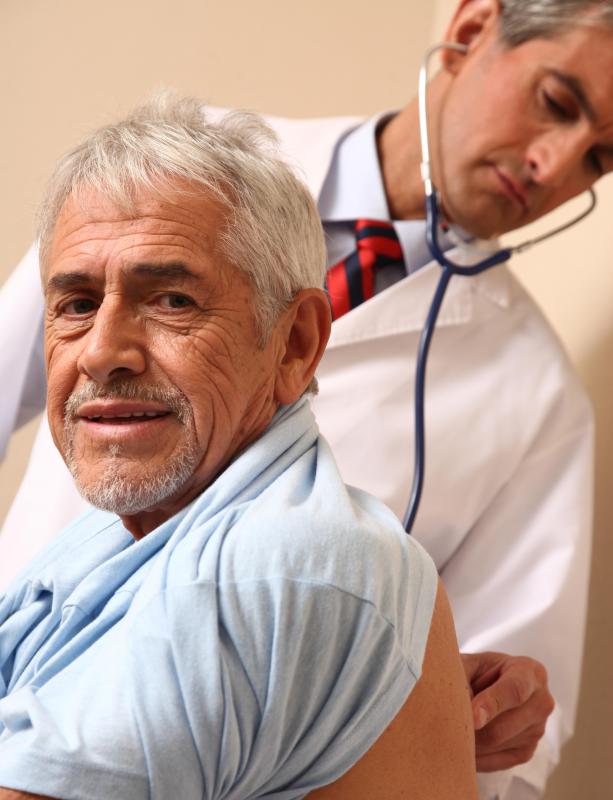At TheHealthBoard, we're committed to delivering accurate, trustworthy information. Our expert-authored content is rigorously fact-checked and sourced from credible authorities. Discover how we uphold the highest standards in providing you with reliable knowledge.
What is a Capnometer?
A capnometer or capnograph is a medical instrument which measures the amount of carbon dioxide (CO2) in the expired breath of patients. These devices are used in a number of settings, ranging from the field to operating rooms, and they are stocked by many medical equipment and supply companies. Models designed for specific applications such as anesthesia may have special features which are designed to make them easier and more efficient to use.
When healthy people breathe out, the air expelled from the lungs carries CO2 as a result of gas exchange which occurs in the lungs, with the carbon dioxide being a waste product of internal metabolism. There are situations which can interfere with gas exchange in the lungs, alter the composition of the gases in the lungs, or make it harder for people to eliminate CO2 from their bodies, and a capnometer can be used to identify changes in CO2 expiration which might indicate that a medical issue is occurring.

In anesthesia, a capnometer is one of the many devices used to monitor a patient during surgery. Changes in carbon dioxide levels exhaled during surgery can indicate that there is a problem with the anesthesia, or that a surgical complication is emerging. By tracking the amount of CO2 a patient breathes out over time or with the volume of each breath, an anesthesiologist can stay alert to the emergent signs of a problematic complication.

Capnometry is also used in the intensive care unit, when patients are stable, but still in critical condition. The device can indicate when CO2 levels are changing, alerting caregivers to a change in the patient's condition, and to the potential for a problem with the lungs. Like other devices used in intensive care, a capnometer can be programmed to transmit to a remote monitoring location so that it can be watched by nurses at a nursing station. It can also be wired to a remote alarm which signals when levels reach a dangerous point.

The capnometer may also be used in breathing studies. Patients with respiratory problems such as asthma, chronic pulmonary obstruction disorder, emphysema, and so forth may be asked to undergo a breathing study so that a doctor can collect important information about the patient's lung function. This information can be used to monitor a patient's condition, gather data about the success of a treatment plan, or to establish a baseline which can be referred to during treatment and assessments in the future.
AS FEATURED ON:
AS FEATURED ON:

















Discussion Comments
A few years ago I worked at the nurses station in the intensive care unit at a burn center. I remember monitoring the patients breathing from a remote capnometer and it was then that I learned how important the end tidal CO2 measurements are.
In a person with healthy lungs that are breathing under normal circumstances their dioxide level should range between four point five to five percent of the air being exhaled.
If the end tidal CO2 is below four percent then the person could fall into a condition called hypocapnia which is low carbon dioxide. This could lead to dizziness, black outs or brain cell damage.
If the end tidal CO2 is above the five percent then it leads to a condition called hypercapnia which obviously is high levels of carbon dioxide which could ultimately lead to respiratory failure.
Luckily I have not experienced either one of these conditions so far in my nursing career but I do understand and appreciate the importance of the capnometer instrument.
Post your comments